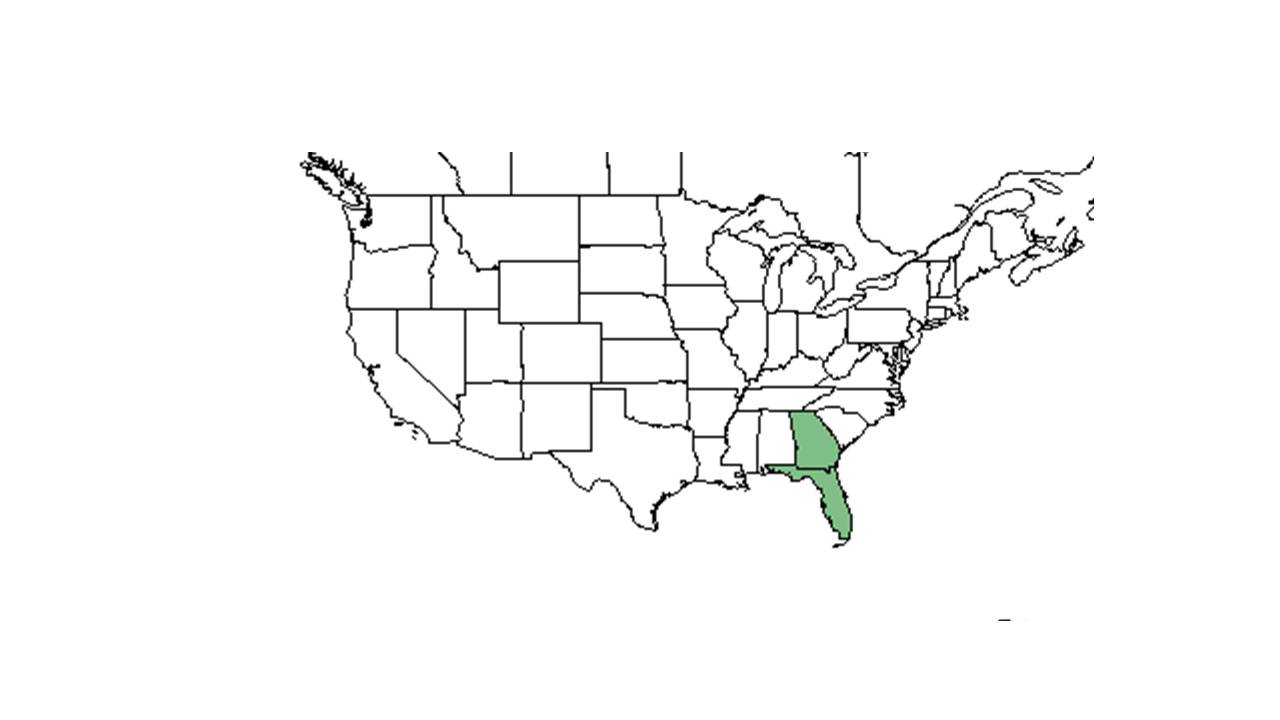Difference between revisions of "Ageratina jucunda"
(→Distribution) |
(→References and notes) |
||
| Line 48: | Line 48: | ||
==Photo Gallery== | ==Photo Gallery== | ||
==References and notes== | ==References and notes== | ||
| + | Wunderlin, Richard P. and Bruce F. Hansen. Guide to the Vascular Plants of Florida. Second edition. 2003. University Press of Florida: Gainesville/Tallahassee/Tampa/Boca Raton/Pensacola/Orlando/Miami/Jacksonville/Ft. Myers. 295. Print. | ||
| + | |||
| + | Hall, David W. Illustrated Plants of Florida and the Coastal Plain: based on the collections of Leland and Lucy Baltzell. 1993. A Maupin House Book. Gainesville. 98. Print. | ||
Revision as of 12:58, 29 June 2015
| Ageratina jucunda | |
|---|---|

| |
| Scientific classification | |
| Kingdom: | Plantae |
| Division: | Magnoliophyta - Flowering plants |
| Class: | Magnoliopsida - Dicotyledons |
| Order: | Asterales |
| Family: | Asteraceae ⁄ Compositae |
| Genus: | Ageratina |
| Species: | A. jucunda |
| Binomial name | |
| Ageratina jucunda (Greene) Clewell & Woot. | |

| |
| Natural range of Ageratina jucunda from USDA NRCS Plants Database. | |
Contents
Description
Common names: Hammock snakeroot; Small leaf Thoroughwort
Synonym names: Eupatorium jucundum Greene
Is a perennial (Hall 1993). Is common in all of Florida; flowers from fall to winter (Hall 1993).
Distribution
Ageratina jucunda is endemic to the southeastern United States, only known to occur in Florida and a few counties in Georgia. [1]
Ecology
Habitat
Sand pine scrub, longleafpine-turkey oak sand ridges, pine-palmetto, live-oak woods, hammocks, dunes, roadsides, old fields, stream banks, dry flatwoods.[2] It is xeric to dry-mesic habitats, including sand pine scrub, longleaf pine-turkey oak. It can also occur along roadsides, in abandoned fields where such habitats used to occur. Ageratina jucunda becomes threatened by habitat loss and fire suppression.[1]. Is found in sandhills and hammocks (Wunderlin and Hansen 2003).
Phenology
Seed dispersal
Seed bank and germination
Fire ecology
Long-term fire management important for survival. [1]
Pollination
Use by animals
Stephanie Sanchez observed a Malachite butterfly feeding on a snakeroot flower.[4]
Diseases and parasites
Conservation and Management
Cultivation and restoration
Photo Gallery
References and notes
Wunderlin, Richard P. and Bruce F. Hansen. Guide to the Vascular Plants of Florida. Second edition. 2003. University Press of Florida: Gainesville/Tallahassee/Tampa/Boca Raton/Pensacola/Orlando/Miami/Jacksonville/Ft. Myers. 295. Print.
Hall, David W. Illustrated Plants of Florida and the Coastal Plain: based on the collections of Leland and Lucy Baltzell. 1993. A Maupin House Book. Gainesville. 98. Print.
- ↑ 1.0 1.1 1.2 Natureserve http://www.natureserve.org/, accessed 15 May 2015.
- ↑ 2.0 2.1 Flora of North America http://floranorthamerica.org/, accessed 15 May 2015.
- ↑ USDA NRCS National Plant Data team http://plants.usda.gov/java/,accessed 15 May 2015.
- ↑ http://butterflies.heuristron.net/plants/ageratinaJucunda.html, accessed 15 May 2015).